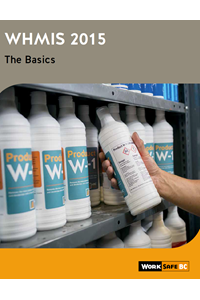WHMIS (Workplace Hazardous Materials Information System)
Hazardous materials may cause serious health problems in workers or fires or explosions in the workplace. WHMIS provides information on hazardous products, as defined and described in the federal Hazardous Products Act and Hazardous Products Regulations, so workers can protect themselves. While WHMIS was updated in 2015, responsibilities for employers, workers, and others remain unchanged.
- Changes to WHMIS
- Responsibilities
- Resources
Each hazardous product must have a label and data sheet. Labels identify the product's hazards and precautionary measures. Data sheets provide more detailed information. If the product is not classified as a hazardous product, the employer must still provide training, supervision, and safe work procedures.
Changes to WHMIS
In 2015, WHMIS was updated to align Canada's system with the U.S. and other major trading partners. Each type of WHMIS user had a set amount of time to transition from WHMIS 1988 to the new WHMIS 2015 system. As of December 1, 2018, WHMIS 1988 no longer applies.
Responsibilities
Under WHMIS 2015, the roles and responsibilities of suppliers, employers, and workers remain the same.
Suppliers
Suppliers (manufacturers, importers, and distributors) must:
- Classify hazardous products
- Prepare and provide labels and SDSs to customers
- Provide supplier labels on all containers of hazardous products they sell or produce
Employers
Employers must:
- Ensure that all hazardous products are properly labelled
- Make SDSs readily available to workers
- Prepare workplace labels and SDSs as necessary
- Provide worker education and training
Workers
Workers must:
- Participate in WHMIS training programs
- Take necessary steps to protect themselves and their co-workers
- Participate in identifying and controlling hazards
- Inform employers if labels are illegible or missing




